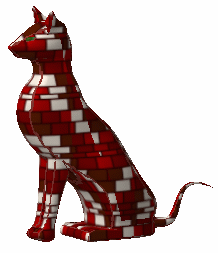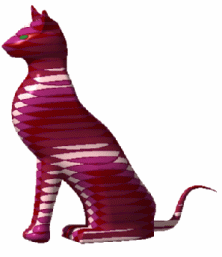Right-click the material behavior in the specification
tree then select xxx_Rendering object > Definition to display
the Rendering Properties dialog box.
Select the Texture tab then select
Chessboard in the
Type list.

When a 3D texture is selected, the corresponding texture image is
projected onto the object in the geometry area so that you can get a
better idea of the final result:

However, note that:
- the projected image does not reflect exactly what you
get when rendering the image
- the texture has a low resolution in order not to deteriorate
performance and as a consequence, the image projected onto
the object may sometimes be pixelated.
The Colors area lets you define tile and join colors.
Click the desired color square to open the
Color chooser then select the color to apply.
You can also deactivate
a color by clearing the Enable option.
The Deformation area lets you define
the Tile Width and Height, Join Width
and Height, Offset options.
The Bump area lets you define an
Amplitude value to add a lighting surface effect to the object.
Use the Transformation area to adjust
the mapped texture.
Click OK when satisfied with your parameters.
The two images below compare the different results
you can obtain using a standard texture and a 3D texture of type
Chessboard:

